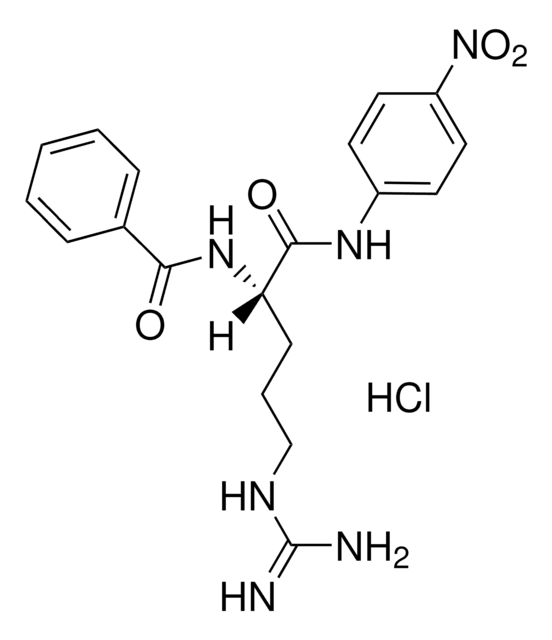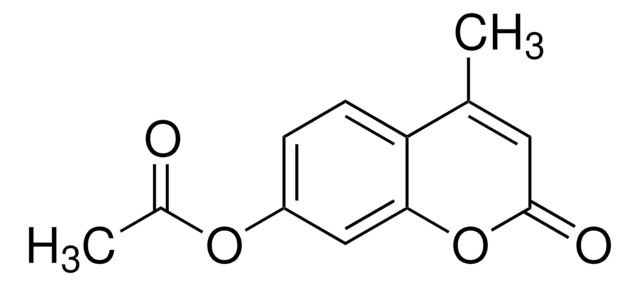N8010
4-Nitrophenyl 4-guanidinobenzoate hydrochloride
protease substrate, ≥95.0% (TLC), powder
Synonim(y):
4-Guanidinobenzoic acid 4-nitrophenylester hydrochloride, NPGB, pNPGB
About This Item
Polecane produkty
product name
4-Nitrophenyl 4-guanidinobenzoate hydrochloride, protease inhibitor and substrate
Poziom jakości
Próba
≥95.0% (TLC)
Postać
powder
rozpuszczalność
formic acid: soluble 49.00-51.00 mg/mL
temp. przechowywania
−20°C
ciąg SMILES
Cl[H].NC(=N)Nc1ccc(cc1)C(=O)Oc2ccc(cc2)[N+]([O-])=O
InChI
1S/C14H12N4O4.ClH/c15-14(16)17-10-3-1-9(2-4-10)13(19)22-12-7-5-11(6-8-12)18(20)21;/h1-8H,(H4,15,16,17);1H
Klucz InChI
PKSBDZOBYIKNGY-UHFFFAOYSA-N
Szukasz podobnych produktów? Odwiedź Przewodnik dotyczący porównywania produktów
Opis ogólny
Zastosowanie
- as a substrate for trypsin for active site titration experiments
- for pre-treating of mosquito eggs in the interplasmid transposition assay
- as a component of isotonic buffer to moisten filter paper for mosquito embryo collection
Działania biochem./fizjol.
Hasło ostrzegawcze
Danger
Zwroty wskazujące rodzaj zagrożenia
Zwroty wskazujące środki ostrożności
Klasyfikacja zagrożeń
Eye Dam. 1
Kod klasy składowania
11 - Combustible Solids
Klasa zagrożenia wodnego (WGK)
WGK 3
Temperatura zapłonu (°F)
Not applicable
Temperatura zapłonu (°C)
Not applicable
Środki ochrony indywidualnej
dust mask type N95 (US), Eyeshields, Gloves
Certyfikaty analizy (CoA)
Poszukaj Certyfikaty analizy (CoA), wpisując numer partii/serii produktów. Numery serii i partii można znaleźć na etykiecie produktu po słowach „seria” lub „partia”.
Masz już ten produkt?
Dokumenty związane z niedawno zakupionymi produktami zostały zamieszczone w Bibliotece dokumentów.
Nasz zespół naukowców ma doświadczenie we wszystkich obszarach badań, w tym w naukach przyrodniczych, materiałoznawstwie, syntezie chemicznej, chromatografii, analityce i wielu innych dziedzinach.
Skontaktuj się z zespołem ds. pomocy technicznej









